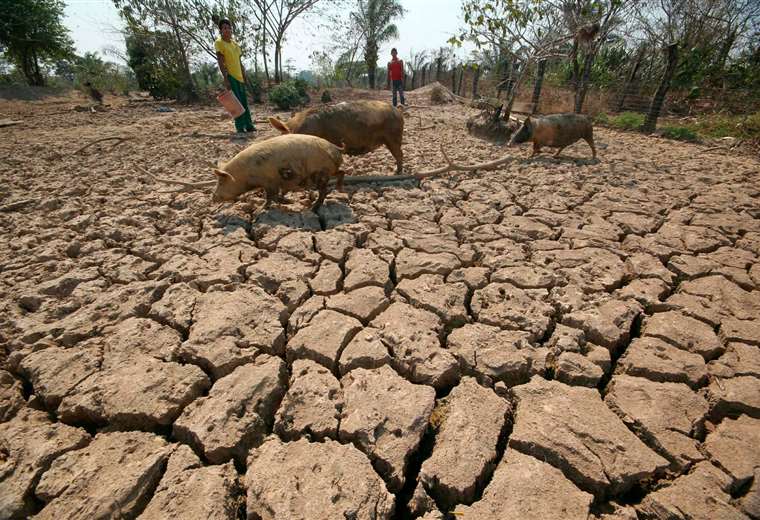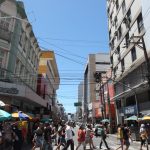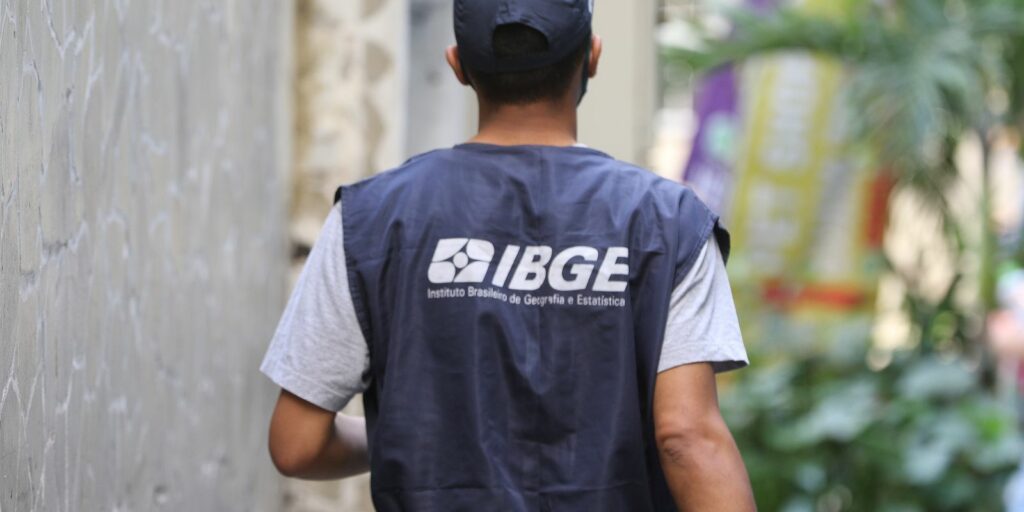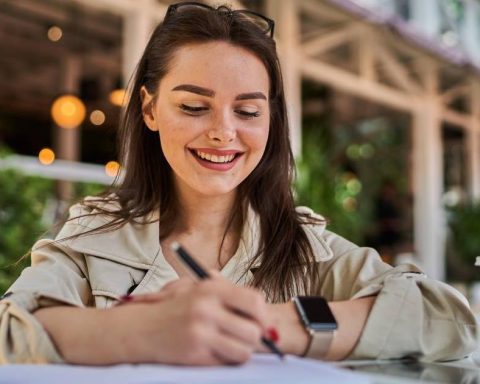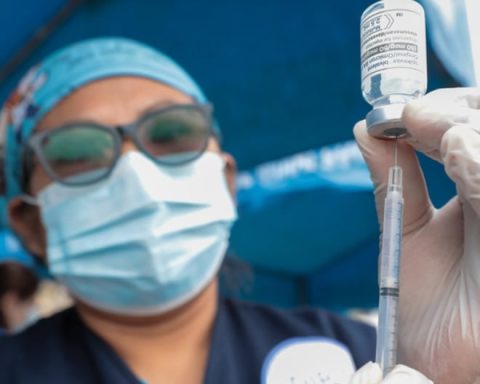March 22, 2023, 6:00 AM
March 22, 2023, 6:00 AM
Historical data from the Peasant Research and Promotion Center (CIPCA) indicate
that in the last four decades, in the Bolivian Chaco area, the dry periods have been extended in the calendar, while the rainy seasons are getting shorter, with increasingly intense rainfall.
According to Dayske Shoji, director of the Water Resources Management Service of the Government, in the whole department there are water problems, even in the Integrated North.
“There are drilling orders. San Rafael, San Ignacio, Guarayos and the municipalities of Chaco,
such as Cuevo, Lagunillas, Cabezas, Charagua are declared in emergency; they requested that
let us support them with equipment for drilling and water storage”, he explained.
The departmental authority recognized that in rural areas there is less access to water, and therefore
therefore consumption is lower than in the metropolitan area.
He also indicated that in the country there is a law with more than 100 years that must be updated, since the conditions of water use have changed.
“We should take into account there are the sectors that make more use of the water resource, and see a fair regulation for all sectors, emphasizing that the Water should be a priority for the human consumption,” he said.
On this point, Marlene Quintanilla, director of Research and Knowledge Management of the Friends of Nature Foundation (FAN), regretted that there are many groups with interests and power to prevent her from updating the regulations.
“There are groups of producers from Cochabamba, that was one of the sectors that was hindering an update of the law, the same
than the miners and the hydrocarbon sector,” he said, and assured that in Camiri the oil companies are
breaking aquifers. “There is a huge gap in water regulation,” he added.
Néstor Cuéllar, regional director of Cipca Cordillera, questioned the “bad execution” of public resources in the declarations of
disaster, because they constitute expenses, not investment, since the money is only used in water tanks and food, but not in the creation of resilient livelihoods.
According to Cuéllar, on dates like World Water Day, the people of Chaco feel that there is no
clear policy on the part of the State, neither for the populations, nor for the producers. “The climatic phenomenon of drought in the Chaco is
long standing When there are structural problems, the solutions have to be structural as well”, he alluded to.
The regional director of Cipca Cordillera said that, specifically in the Chaco, the situation is
dramatic, since none of the 16 autonomous territorial entities has a supply of domestic drinking water.
“The worst cases are in Macharetí, and in Gutiérrez, which are constituted in capitals. In Gutiérrez you have to buy a water barrel between Bs 10 and 15; In Macharetí, the provision is every three days, or sometimes water is provided two days a week.
week,” he said.
He also shared that Camiri, with more than 30,000 inhabitants, does not have an endowment of
adequate water, and that Charagua recently went four days without water, to the point that classes were suspended.
“Cabezas has a similar figure, the same as Villa Montes, Yacuiba, Carapari, Huacaya, Monteagudo, Muyupampa. are situations very complex those that are lived in the chaco, and understanding that the Chaco is the wallet or the one generates the most revenue Bolivian State for the sale of hydrocarbons,” he questioned.
demographic factor
For Quintanilla, what is happening in areas where there were no water availability problems before, such as San Ignacio,
Guarayos, and San Jose.
He said that all this occurs due to climatic effects, but also due to deforestation, which affects
the decrease in the flow of its waters. “In his different workshops, Saguapac has been warning about the reduction and contamination of water for a long time,” he said.
The FAN expert asserted that Santa Cruz is one of the departments that is growing exponentially, which at the same time increases the demand for water.
He regretted that at the central and departmental levels they only work with well drilling and, in some cases, where there are no good
aquifers, “what they do is extract from the rivers. They are running out of resources and there is no sustainable plan or use of groundwater, which is ending and it is difficult to renew, because it is water that accumulates for hundreds and thousands of years. we are ending
these reserves,” he argued.
He recommended taking special care with the producing areas, or “factories” of water, which are
They are located in Amboró, Lomas de Arena, the entire Urubó area, the Chochís and Tucabaca mountains, the Noel Kempff National Park,
and the Ríos Blanco y Negro Wildlife Reserve, in Chiquitania. He also mentioned El Choré, in the Integrated North.
He said that there is a water productivity map and it is the protected areas that are now
sustaining the water in the hydric systems, and paradoxically the most attacked in the last
time.
“Although they were created for the conservation of biodiversity, the fund is to protect the water of
Santa Cruz de la Sierra and other regions,” he said.
Population-speaking, Quintanilla reported that in the urban area, in the capital of Santa Cruz, per capita consumption is 140 liters per day, while in rural areas it is below 80 liters.
“For example, in the Chaco, they can reach 20 liters per day because the resource is very scarce and
consume the minimum. These data are from a survey we did in the Chaco, in communities that do not have water. In Chiquitania the figure improves, with consumption
per person of 80 liters/day”, he said.
Quintanilla explained that these data are not so recent, and that the population is growing, which has generated greater exploitation of aquifers.
“A serious problem is that many of these supply wells are already contaminated, Saguapac, which makes a better
planning, he said that he has to drill more than 100 meters due to the risk of contamination due to the latrines,” he argued.
A study by FAN del Piraí shows how the availability of water in this basin is decreasing, due to the change in land use (PLUS), the decrease in forests in the upper basin (from Samaipata, ending in Porongo), “where the large urbanizations that join the highway,” he said.
In the Urubó there is a large aquifer, and FAN identified that the water was being reduced there, even before the urbanizations, because the storage processes by infiltration did not take place.
“We launched this study several times, in 2012 there was the last update, and if we add the
urbanizations, it is a very serious issue”, he warned.
agricultural frontier
Another concern has to do with the expansion of the agricultural and livestock frontier in non-conventional areas, such as reserves.
forestry, etc.
Environmental data indicates that agribusiness is the largest consumer of water in Santa
Cross. A bovine specimen absorbs 80 liters per day. According to FAN, agribusiness uses 60% of the water, while human consumption reaches 30%.
Peace
At the Government headquarters, the rains were reduced by 50% and Epsas asked to take care of the water.
Until yesterday, at six o’clock in the afternoon, the reports from the park rangers indicated that the water level in the Incachaca dam, one of the sources of the vital liquid, was two meters below what was expected. If this level is maintained after the end of the rainy season, the omen is worrisome.
departmental plan
Dayske Shoji celebrated two pieces of good news, the first is that the office of the lieutenant governor completed a study on contamination of the aquifers, with 200 samples at the metropolis level, which will be presented this week.
He also announced that in the next twelve months the departmental plan for
water resources for Chiquitania and the Santa Cruz metropolis. “We can’t just focus on drilling,” he acknowledged.
Juan Carlos Sauma, an expert in water resources, also celebrated the approval of Departmental Law 208/2021, which creates the
Güendá Urubó Natural Heritage Conservation Unit.
For Sauma, on World Water Day it is highlighted that the Management Plan of the UCPN GorEndá Urubó is in its final stage of development and, due to the importance of the subject, the Bolivian Society of Engineers (SIB) Filial Santa Cruz, through the College of Civil Engineers, promoted in recent days the broad participation of municipalities, institutions, universities, professional associations, experts and civil society.
“This to enrich the formulation of a planning and control tool that must guarantee water for future generations. Step by step, Santa Cruz and its people forge their future, in a world where water is increasingly scarce and fratricidal wars for water are on the horizon,” he concluded.
FIGURE
The Water Law, the mother standard that regulates the use of this liquid in the country, is 120 years old.
